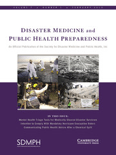
Disaster Medicine and Public Health Preparedness
Scope & Guideline
Advancing knowledge in disaster readiness and public health.
Introduction
Aims and Scopes
- Disaster Preparedness and Response:
Research on the systems, frameworks, and strategies necessary for effective disaster preparedness and response, including training programs for healthcare professionals and communities. - Public Health Implications of Disasters:
Investigating the direct and indirect impacts of disasters on public health, including epidemiological studies assessing health outcomes following various calamities. - Mental Health and Psychosocial Support:
Exploring the psychological effects of disasters on individuals and communities, as well as effective methods for providing mental health support in emergency situations. - Health Equity and Vulnerability:
Analyzing how socioeconomic factors influence disaster preparedness and response, particularly for marginalized populations. - Interdisciplinary Collaboration:
Promoting and assessing the effectiveness of collaboration among various stakeholders, including healthcare providers, government agencies, and community organizations in disaster management. - Innovative Technologies in Disaster Management:
Evaluating the role of technology, such as artificial intelligence and telemedicine, in enhancing disaster preparedness and response capabilities.
Trending and Emerging
- COVID-19 Impact and Preparedness:
Research on the effects of the COVID-19 pandemic on healthcare systems, emergency preparedness, and community resilience has surged, addressing lessons learned and future implications. - Mental Health in Disasters:
An increasing focus on mental health outcomes related to disasters, including the psychosocial impacts and strategies for providing support during and after emergencies. - Climate Change and Health Risks:
Emerging studies are focusing on the intersection of climate change and public health, particularly how environmental changes exacerbate disaster risks and health outcomes. - Use of Technology in Disaster Response:
There is a growing trend in research exploring the integration of technology, such as AI and telemedicine, into disaster response and management strategies. - Community Engagement and Resilience Building:
Research emphasizing the role of community involvement and resilience-building strategies is gaining traction, highlighting the importance of local knowledge and resources in disaster preparedness.
Declining or Waning
- Traditional Disaster Management Frameworks:
There is a noticeable decrease in research focused solely on conventional disaster management frameworks, as the field increasingly embraces more dynamic and integrated approaches. - Single-Domain Studies:
Research that examines disasters from a single perspective or discipline is less frequent, with a shift towards more interdisciplinary and holistic approaches. - Post-Disaster Recovery Focus:
Studies concentrating primarily on post-disaster recovery, without addressing immediate response strategies or preparedness, appear to be less common in recent issues. - Geographic-Specific Disaster Studies:
Research that is limited to specific geographic regions without broader applicability or comparative analysis has decreased, as there is a growing trend towards global perspectives. - Static Policy Analysis:
The journal has moved away from static analyses of existing policies, favoring research that evaluates the effectiveness of adaptive and responsive policy frameworks.
Similar Journals

Frontiers in Emergency Medicine
Championing open-access knowledge for emergency medicine.Frontiers in Emergency Medicine, published by Tehran University of Medical Sciences, stands as an essential open-access platform dedicated to advancing research and practice in the diverse fields of emergency medicine, nursing, and medical services. With a focus on publishing high-quality studies that address the emerging challenges in prehospital and emergency care settings, this journal has rapidly gained recognition since its inception in 2021. The journal's current Scopus rankings place it favorably within the top quartiles for emergency medical services and emergency nursing, making it a valuable resource for researchers and practitioners aiming to enhance patient care and operational efficiency in emergency contexts. The journal encourages submissions that explore innovative practices, clinical outcomes, and policy developments in emergency medicine, promising accessibility and visibility for authors through its open-access model. Located in Iran, Frontiers in Emergency Medicine not only serves the regional community but also aspires to impact the global discourse in emergency healthcare.
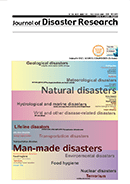
Journal of Disaster Research
Innovating strategies to mitigate disaster impacts worldwide.Journal of Disaster Research, published by FUJI TECHNOLOGY PRESS LTD, is a prominent Open Access journal that has been disseminating critical research on disaster management since its inception in 2007. Focusing on the interrelated fields of engineering and safety, the journal aims to advance knowledge and policy in disaster risk reduction, response, and resilience, making it an essential resource for researchers, practitioners, and policymakers alike. With an ISSN of 1881-2473 and E-ISSN 1883-8030, the journal covers a wide range of topics related to disaster studies, ensuring the dissemination of innovative solutions and diverse perspectives. Situated in Japan, the journal has been ranked Q3 in both Engineering (Miscellaneous) and Safety, Risk, Reliability, and Quality categories, showcasing its commitment to quality scholarship. As it converges its research contributions from 2006 to 2024, the Journal of Disaster Research continues to serve as a vital platform for advancing the science and practice of disaster research, thereby enhancing societal resilience against crises.

Journal of the American College of Emergency Physicians Open
Unlocking Vital Insights for Emergency Care ProfessionalsJournal of the American College of Emergency Physicians Open is a prominent Open Access journal published by WILEY that has been committed to advancing the field of emergency medicine since its inception in 2020. As a vital resource for researchers, clinicians, and students, this journal aims to disseminate innovative research findings, clinical guidelines, and educational resources that support the rapidly evolving landscape of emergency care. With a solid Q1 ranking in the emergency medicine category and positioned within the top 25 ranks of Scopus’ emergency medicine listings, the journal ensures high visibility and accessibility for critical research. As an open-access publication, it provides unrestricted access to its content, facilitating knowledge sharing and collaboration among professionals globally. The journal's significant impact on the field is reflected in its growing influence, underlining its relevance as an essential platform for advancing emergency medicine practice and research.
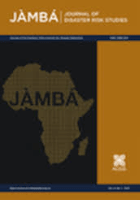
Jamba-Journal of Disaster Risk Studies
Championing Safety through Collaborative Research.Jamba-Journal of Disaster Risk Studies, published by AOSIS, serves as a vital resource in the fields of management, monitoring, policy, law, and safety research, with an ISSN of 1996-1421 and an E-ISSN of 2072-845X. Since its establishment as an Open Access journal in 2006, Jamba has dedicated itself to disseminating high-quality research that informs and enhances disaster risk management practices, particularly within the South African context and beyond. With a robust Impact Factor and acknowledgement in the Q2 and Q3 quartiles across critical categories in 2023, Jamba ranks favorably in Scopus, notably Rank #50/109 in Social Sciences (Safety Research) and Rank #218/399 in Environmental Science (Management, Monitoring, Policy and Law). The journal's convergence over the years—from 2013 to 2024—signals its commitment to adapting contemporary challenges in disaster risk studies. Scholars and practitioners are encouraged to explore Jamba as a go-to platform for innovative insights and collaborative discussions that impact policy-making and practical applications in disaster risk reduction.
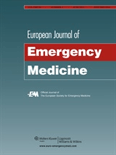
European Journal of Emergency Medicine
Advancing the Frontiers of Emergency CareWelcome to the European Journal of Emergency Medicine, a premier publication dedicated to advancing the field of emergency medicine. Published by Lippincott Williams & Wilkins, this journal serves as a vital resource for researchers, practitioners, and students alike, delivering high-quality, peer-reviewed articles that reflect the latest advancements and best practices in emergency care. With its publication history dating back to 1994 and a projected convergence until 2024, the journal has established itself as an influential voice in the field, boasting a commendable Q2 ranking in Emergency Medicine as of 2023. The Scopus ranking further reinforces its prestige, placing it in the 73rd percentile among its peers. Although currently not an Open Access journal, the European Journal of Emergency Medicine remains committed to making critical knowledge accessible and impactful within the global medical community. We invite you to explore cutting-edge research, innovative studies, and key clinical insights that are essential for improving patient outcomes and advancing emergency medical practices.

Prehospital and Disaster Medicine
Connecting Research with Real-World Impact in DisastersPrehospital and Disaster Medicine is a leading peer-reviewed journal published by Cambridge University Press that targets the ever-evolving fields of emergency medicine and disaster management. With an ISSN of 1049-023X and an E-ISSN of 1945-1938, this journal has established its significance within the academic community since its inception, with coverage extending from 1985 to the present. It is widely recognized within its category as evidenced by its 2023 rankings, which position it in the Q2 quartile for both Emergency Medicine and Emergency Nursing. The journal boasts impressive Scopus rankings, standing at Rank #7/32 in Emergency Nursing and Rank #31/109 in Emergency Medicine, demonstrating its relevance and impact in these critical areas. Although it does not offer Open Access, Prehospital and Disaster Medicine is committed to disseminating vital research and innovative practices that address prehospital care, disaster response, and the intersection of these fields, serving as an essential resource for researchers, professionals, and students alike.

International Journal of Disaster Risk Science
Empowering communities with cutting-edge insights on disaster preparedness.The International Journal of Disaster Risk Science, with ISSN 2095-0055 and E-ISSN 2192-6395, is a premier, peer-reviewed open-access journal published by Springer. Since its inception in 2011, the journal has been dedicated to advancing knowledge and practice in the field of disaster risk science, facilitating critical discussions around disaster preparedness, response, and resilience across various regions of the globe. This journal holds impressive rankings, including Q1 in Geography, Planning and Development, and Q1 in Safety Research for 2023, confirming its high impact within the academic community. With converged publication years from 2010 to 2024 and being ranked in the top 10% in multiple categories, it serves as an essential resource for researchers, professionals, and students alike. As an open-access journal, it ensures that cutting-edge research is freely available, promoting wider dissemination and engagement with topical issues in disaster risk management.
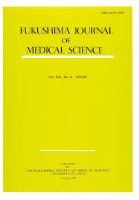
Fukushima Journal of Medical Science
Connecting Disciplines, Transforming HealthcareFukushima Journal of Medical Science is a respected academic platform published by the Fukushima Society of Medical Science, focusing on a diverse array of topics within the field of medicine. With its roots tracing back to 1964, the journal has established a rich tradition of contributing to medical knowledge and remains a vital resource for researchers and professionals alike. Based in Japan, the journal holds a Q3 category ranking in Medicine (miscellaneous) as of 2023, showcasing its ongoing relevance and impact in the academic community. Although it currently does not offer open access options, its comprehensive content is accessible through institutional subscriptions. The journal's diverse rankings across multiple Scopus categories highlight its multidisciplinary approach, especially in areas such as Social Sciences and Phamaceutical Science, ensuring that it caters to a broad audience from various fields. The Fukushima Journal of Medical Science serves as an essential conduit for innovative research, collaboration, and professional development within its esteemed community, making it an invaluable asset for anyone invested in advancing the medical sciences.
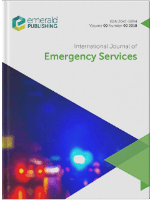
International Journal of Emergency Services
Transforming challenges into solutions for emergency professionals.The International Journal of Emergency Services, published by Emerald Group Publishing Ltd, is a pivotal resource in the fields of management science, operations research, and safety research. With its ISSN 2047-0894 and E-ISSN 2047-0908, this journal serves as a platform for innovative research and discourse from 2012 through to 2024. Recognized for its quality, it holds a Q3 ranking in both management and safety categories, demonstrating its commitment to advancing knowledge and practice in emergency services. The journal is particularly valued for its contributions to enhancing operational efficiency, promoting safety, and addressing the evolving challenges faced by emergency service professionals globally. It attracts a diverse readership comprising researchers, practitioners, and students keen to explore cutting-edge findings and methodologies. With access options tailored for academic and professional communities, the International Journal of Emergency Services remains an essential reference for those seeking to improve emergency response frameworks and strategies within the UK and beyond.
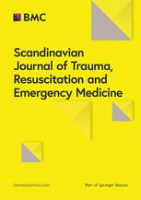
Scandinavian Journal of Trauma Resuscitation & Emergency Medicine
Advancing Trauma Care Through Innovative ResearchThe Scandinavian Journal of Trauma Resuscitation & Emergency Medicine, published by BMC, stands as a leading open-access platform dedicated to advancing the fields of trauma, resuscitation, and emergency medicine since its inception in 2008. With an ISSN of 1757-7241 and an impressive track record, this journal has established itself in the top quartile of critical care and emergency medicine, achieving Q1 rankings in both categories for 2023. Its Scopus rankings further underscore its importance, placing it among the top 11 journals in emergency medicine and the 23rd in critical care and intensive care medicine, signaling a strong impact within the academic community. As we converge toward 2024, the journal continues to provide researchers, clinicians, and students with valuable access to cutting-edge research and developments in the sector, contributing significantly to knowledge, practice, and policy in emergency care. Located in the heart of the United Kingdom, the journal remains dedicated to its mission of fostering innovation and dissemination of high-quality research, ensuring that vital medical advancements reach those who need them most.